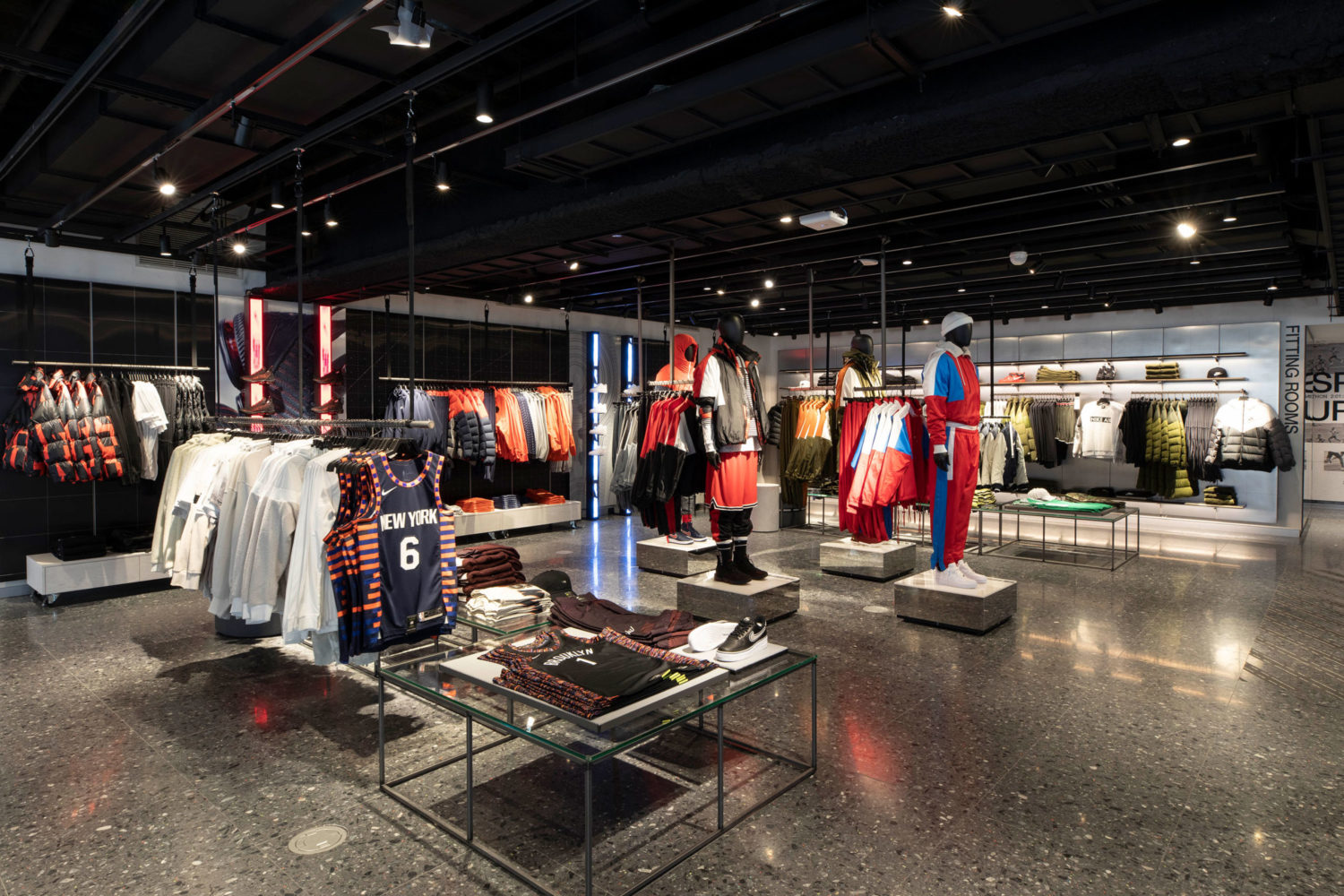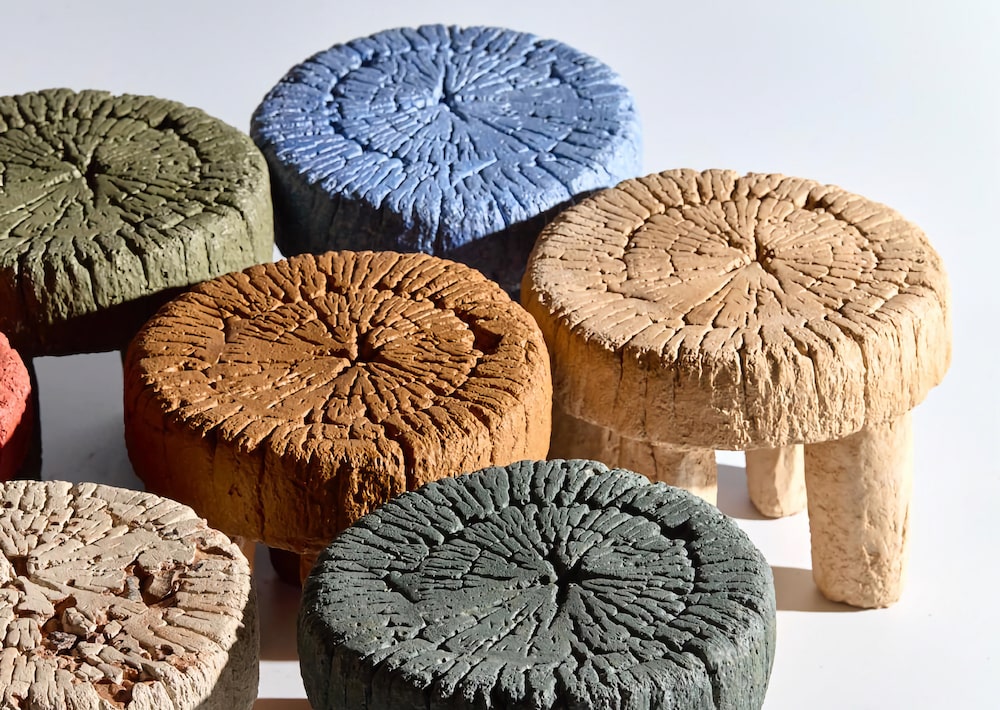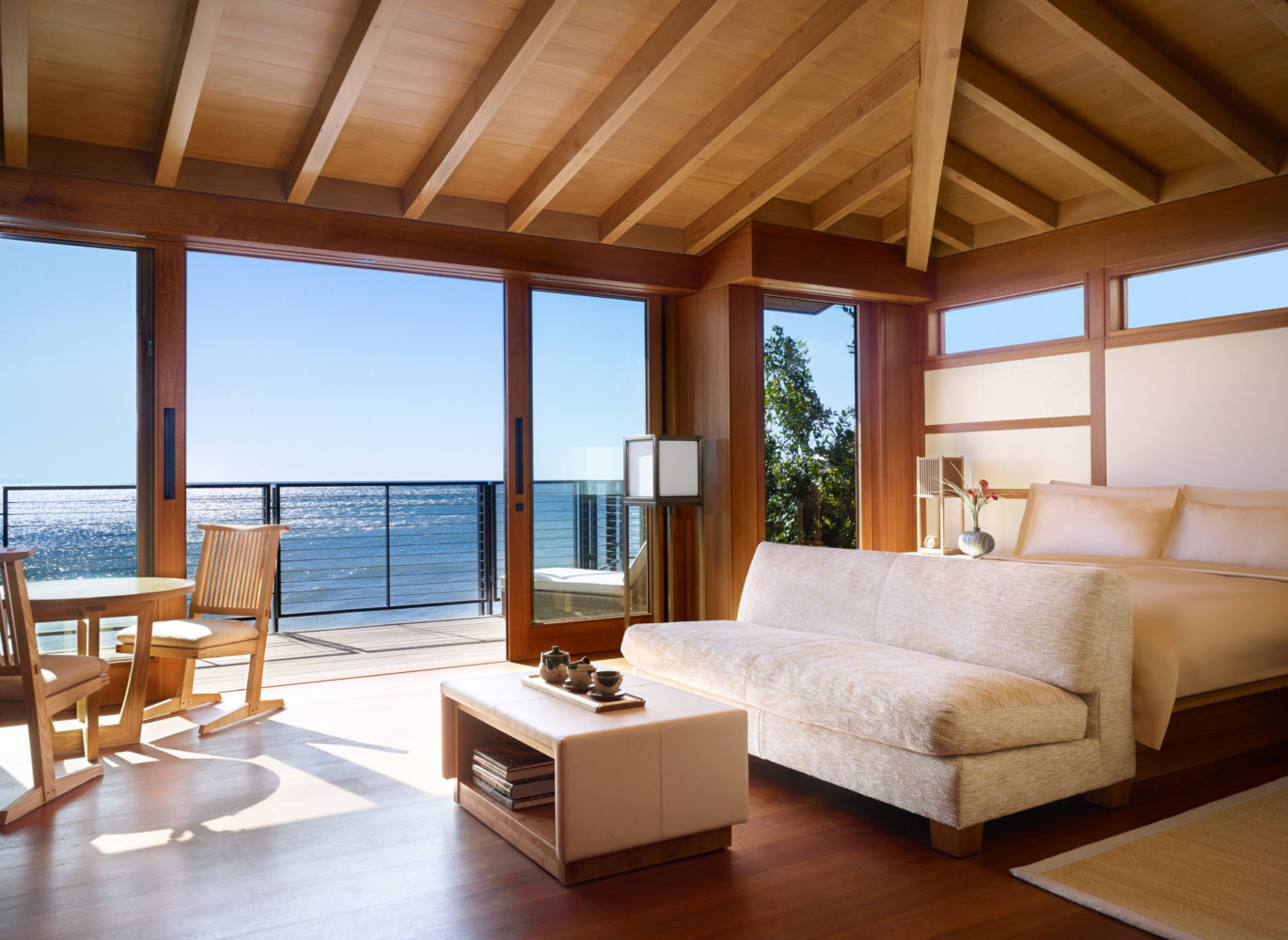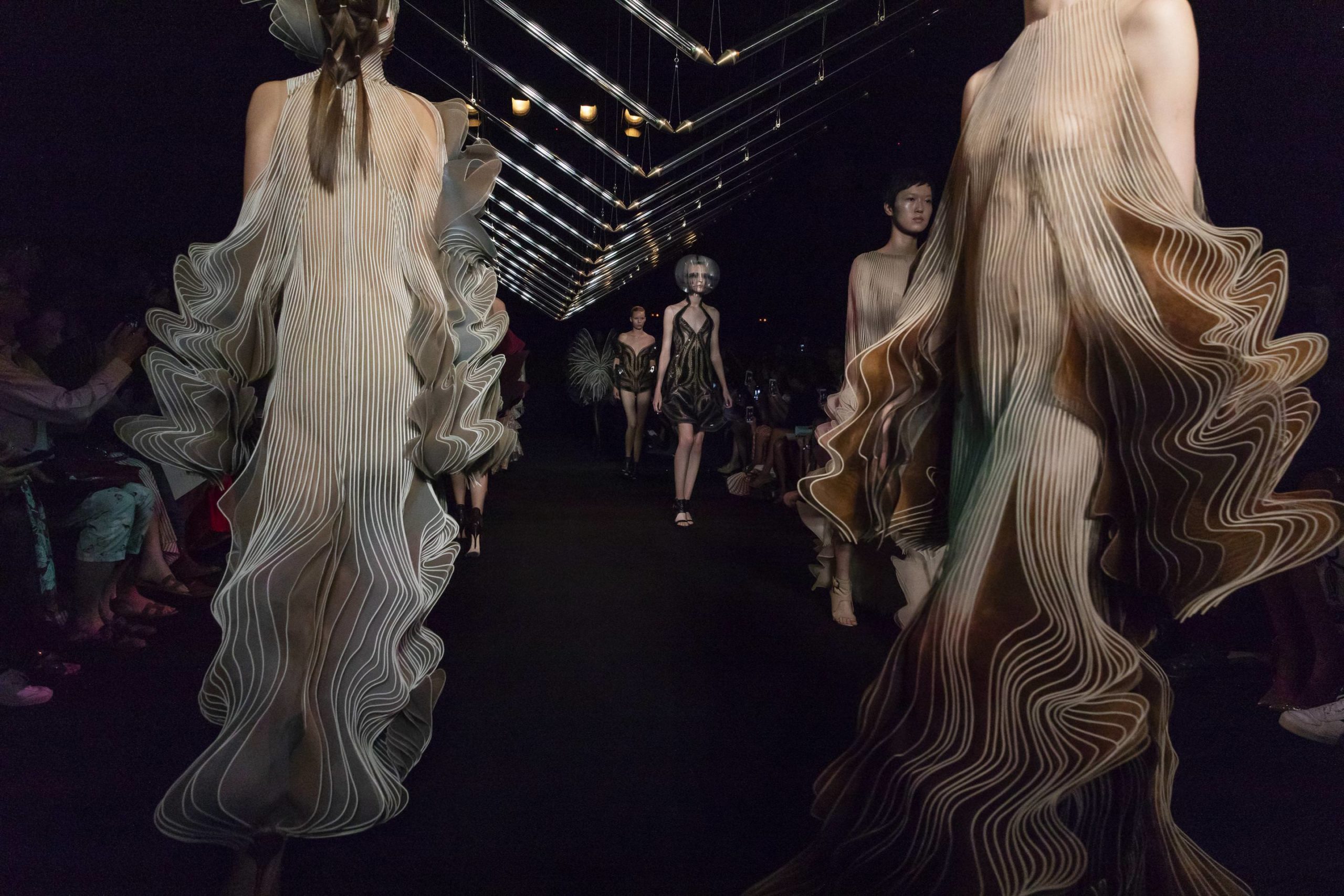Craig Redman and Karl Maier are both natives to the East coast of Australia. While studying design, they met during their first semester at Griffith University. In and out of class, their interests grew, and the duo built a shared aesthetic focused on color and cultural touchstones. Ever since, they’ve been known as Craig & Karl, working on artworks, site-specific installations, magazine covers, large-scale murals, set design, product design, and more. As Redman is based in New York and Maier is based in London, that means lots of communication, collaboration, organization, and trust.
To date, some of their most notable projects have been working on campaigns with brands like LVMH, Nike, Apple, and Google; installing works at public places like The London EDITION, the Siam Center in Bangkok, and Neon Lane in Melbourne; and creating for exhibitions at the Louvre, Musée de la Publicité, and the Museum of Brisbane.

Courtesy of Nike NYC, House of Innovation 000.
Whitewall spoke with Redman and Maier to hear about their latest desk design, how their personal relationships with art and design have evolved, and why a kitschy aesthetic is always something they’re interested in.
WW: Tell us a bit about your latest Holey Moly desk, which was made in Brooklyn.
CRAIG REDMAN & KARL MAIER: Holey Moly is a collaboration with our friend and fabricator Dan Conway. The desk is a translation of our installation and illustration work into a functional piece of furniture. We made it with Dan during quarantine. Since we couldn’t visit each other’s studios, we traded sketches, photos, and videos making design decisions along the way. Small things needed to be tweaked during the process, but fortunately the finished design remained mostly unchanged from the original idea.
WW: Where does your creative process typically begin? An idea? A sketch?
CR & KM: It doesn’t matter if it’s an illustration or an installation, for us it’s all about the idea first. Our process always begins with a conversation between the two of us to quickly hash out any initial ideas that spring to mind. We try to talk things through until we arrive at what sounds like a tangible approach.
One or both of us will then sketch or draw up whatever it is we’ve just spoken about. Often, there are a few ideas we’re considering. We’ll banter these back and forth until we’re happy with a given approach, and one of us will then finish it off. In truth, it’s pretty loose. Sometimes it’s simply a matter of getting a fresh set of eyes on something you’ve been staring at for far too long. We trust and rely on each other’s opinion completely. That’s probably the biggest factor.
WW: What kind of feeling of atmosphere do you aim to express with your work?
CR & KM: We’re both relatively cynical people, but our work tends to exude optimistic vibes. We intentionally try to create work with a visual language that is specific to us. Over the years, we’ve developed a look that is ours, and we work to inject color, patterns, and a sense of humor into each project so it reads as uniquely us.
Even if the style or scale of the project differs, we intentionally keep some elements consistent from our wider body of work, which keeps it all under one umbrella. Our background influences the feel of our work too. Growing up in Australia in the ‘80s was a time and place of kitsch—something we aren’t afraid to embrace in our projects. We like to have fun with our work and not take ourselves too seriously.
WW: Tell us a bit about your relationship with art.
CR & KM: We both spend a lot of time in galleries and are probably more influenced by the art world than any outside force. Being in New York and London means we get to experience the best shows in real time, and the artists we’re most drawn to often have an expert use of color and form—like the way Matt Connor handles color in his paintings or the way Alex Da Corte conceives and installs his installations.
One person we continually reference and look up to is David Hockney. He is a master of color, he embraces working in different mediums, he tells a clear story, and there is a simple cleanliness in the themes and subjects of his work—all things we aspire to.
WW: Tell us a bit about some of your personal inspirations for work. Are there any periods, focuses, or artists that have inspired the company over time? What about now?
CR & KM: The influences for our work comes from all over the place. It could be something we read in the news, the composition of a painting, or even something said on a reality show that triggers a new idea. We absorb a lot of different things and Frankenstein them together in our own way. It’s also real-world stuff like gallery trawling or just hanging out with friends that draws out ideas.
More specifically, though, we’re drawn to ‘70s interiors, Nicolas Party, Ernst Ludwig Kirchner, the outfit color schemes on the Golden Girls, Pierre Cardin furniture, Crazy Frog, Jonathan Zawada, Tokyo, Ed Atkins, plastic floral arrangements, and Martin Creed.
WW: Craig, you’re based in NYC, and Karl, you’re based in London. How does being in separate cities impact your work?
CR & KM: We feel lucky to be living in New York and London and to be experiencing those cities from an Australian point-of-view. Culturally, all three are quite different, but we see that as a positive. It means we bring different experiences to our work, which creates a unique perspective, and we definitely feed off that.
The most surprising thing, once we’d settled in our respective cities, was probably that it wasn’t very difficult to work apart, and it didn’t disrupt the way we work in any major way—partly because we simply had to get on with it. Strangely, we each also get to be dually independent and codependent in our working lives. The only downside may be the loss of a certain spontaneity that we have whenever we’re in the same room.
WW: Tell us a bit about how you’re staying creative, inspired, or hopeful during COVID-19. How are you spending your time in isolation?
CR & KM: From a creative point of view COVID-19 has allowed us more time to work on personal projects. We work on personal projects all year round, but this has allowed us to delve deeper into territory that we usually can’t with client projects. It’s through self-initiated projects that ideas emerge for new series of work and so on, as long as we can keep pushing ourselves to continually create it’s a nice cycle to be in. Creating our own work is where we get to go crazy, there are no restraints imposed on us and no deadlines, it’s where we can really push ourselves.
Apart from that, it’s all the usuals—showering too much attention on our pets, Zoom calls, cooking an insane amount, and churning through reality TV.








